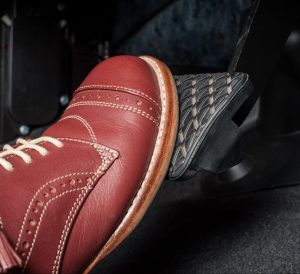Know How – Expert Edition – NVH Prevention
26 May 2021
With Graeme Ryder
Graeme is an expert in friction braking with over 20 years of engineering and automotive industry experience. Specialising in friction theory, he educates technicians at all levels in practical application and installation best practice via TechMate, our specialist technical support partners. In this edition, Graeme will be taking a look at how Noise, Vibration and Harshness (NVH) can hamper the driving experience and how braking systems can counteract it.
INTRODUCTION
An enjoyable cabin experience is just as important a consideration when purchasing a vehicle as its more technical specifications. High levels of NVH can be a major detriment to a car’s value, especially with so many manufacturers investing heavily in comfort, audio, technology, and layout R&D to drive sales. Reducing NVH generated by the braking system and ensuring that those countermeasures remain sufficient when working with aftermarket parts can be an essential practice.
DEVELOPMENT
Vehicle manufacturers rely on their suppliers for preliminary testing on the individual components that make up a braking system. Verifying if a braking system generates sufficient friction and suppresses noise without impacting pedal feel, fade resistance, wear, or stopping power includes closely meeting OE specifications. Those specifications are also weighed against performance on test tracks to evaluate overall brake quality. When all design targets have been met, the braking system is approved and production begins. When designing brakes to OE specifications, NAPA developers follow industry standard testing processes which include the use of a dynamometer, a test track and even road testing for aftermarket brake pads.
QUIETING BRAKES
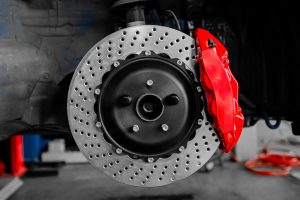 Design, materials and the production process can all affect the volume of braking systems. Most brake noise is the result of vibrations between the caliper and the pads. When the pad inside a caliper isn’t properly secured, it oscillates and vibrates when it comes into contact with the brake disc, creating a squeaking sound. Heavily scored or lipped brake discs can also make excessive noise due to their rough surfaces rubbing against the pads. When replacing brake parts, the OE quality and innovation offered by NAPA products can help to reduce NVH. These products can range from shims to dampen pad-caliper vibrations to added slots to enhance the pad while reducing noise.
Design, materials and the production process can all affect the volume of braking systems. Most brake noise is the result of vibrations between the caliper and the pads. When the pad inside a caliper isn’t properly secured, it oscillates and vibrates when it comes into contact with the brake disc, creating a squeaking sound. Heavily scored or lipped brake discs can also make excessive noise due to their rough surfaces rubbing against the pads. When replacing brake parts, the OE quality and innovation offered by NAPA products can help to reduce NVH. These products can range from shims to dampen pad-caliper vibrations to added slots to enhance the pad while reducing noise.
RESTORING BRAKES
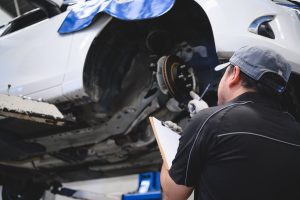 Though NAPA Braking components benefit from NVH prevention features, they can often be hampered by the corrosion and wear of surrounding components when installed in older vehicles. For example, springs can lose their tension by up to 50% due to wear and tear, which causes pads to move excessively and generate noise. The best practice for minimising noise is to restore the entire braking system to an as-new condition. This involves the assessment of the calipers, discs and other hardware to assess the need for restoration or replacement. When fitting, ensure that all corrosion is removed from the support points beforehand to prevent brake noise.
Though NAPA Braking components benefit from NVH prevention features, they can often be hampered by the corrosion and wear of surrounding components when installed in older vehicles. For example, springs can lose their tension by up to 50% due to wear and tear, which causes pads to move excessively and generate noise. The best practice for minimising noise is to restore the entire braking system to an as-new condition. This involves the assessment of the calipers, discs and other hardware to assess the need for restoration or replacement. When fitting, ensure that all corrosion is removed from the support points beforehand to prevent brake noise.
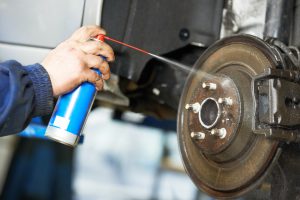 When lubricating new or restored braking parts, make sure to avoid using copper grease as this may cause erosion and impact ABS signals. You should also ensure that the hubs are thoroughly cleaned before fitting any new brake discs. A dial test indicator (DTI) is also important at this stage to check for lateral runout. By taking these steps, one can make certain that there will not be any brake juddering after the repair has been completed.
When lubricating new or restored braking parts, make sure to avoid using copper grease as this may cause erosion and impact ABS signals. You should also ensure that the hubs are thoroughly cleaned before fitting any new brake discs. A dial test indicator (DTI) is also important at this stage to check for lateral runout. By taking these steps, one can make certain that there will not be any brake juddering after the repair has been completed.
NEW BRAKES, OLD CARS
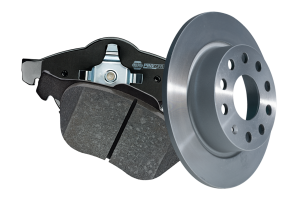 Although best practice involves an overall assessment of the vehicle’s condition to ensure other components will not increase NVH levels, this does not mean that older vehicles will invariably lead to sunken costs. As mentioned, modern vehicle manufacturers appreciate the negative impact NVH can have on the driving experience and specifically design and produce cars that mitigate that impact. As a result, ensuring that your vehicle generates a reasonable level of NVH is becoming an easier feat through routine maintenance. In the event of a damaged or worn braking system, however, fitting parts from NAPA’s extensive range of OE quality braking products will allow for optimal performance.
Although best practice involves an overall assessment of the vehicle’s condition to ensure other components will not increase NVH levels, this does not mean that older vehicles will invariably lead to sunken costs. As mentioned, modern vehicle manufacturers appreciate the negative impact NVH can have on the driving experience and specifically design and produce cars that mitigate that impact. As a result, ensuring that your vehicle generates a reasonable level of NVH is becoming an easier feat through routine maintenance. In the event of a damaged or worn braking system, however, fitting parts from NAPA’s extensive range of OE quality braking products will allow for optimal performance.
Did you know?
Certain noises can be indicative of specific braking system issues. A high-pitched squealing can indicate a worn brake pad for example, and grinding when brakes are applied might be the result of debris stuck in the caliper.
IN NEED OF DIRECT SUPPORT?
TechMate is a team of automotive technical specialists providing direct support across the country. As a partner to NAPA, TechMate knows the NAPA product portfolio inside and out and uses their expertise to support NAPA customers every step of the way.
Contact TechMate on 01174 288090 or email [email protected] to arrange a visit.
Alternatively, contact NAPA Technical on 03333 136597 or email [email protected] for remote advice.
Become a NAPA Stockist Download PDF Guide
